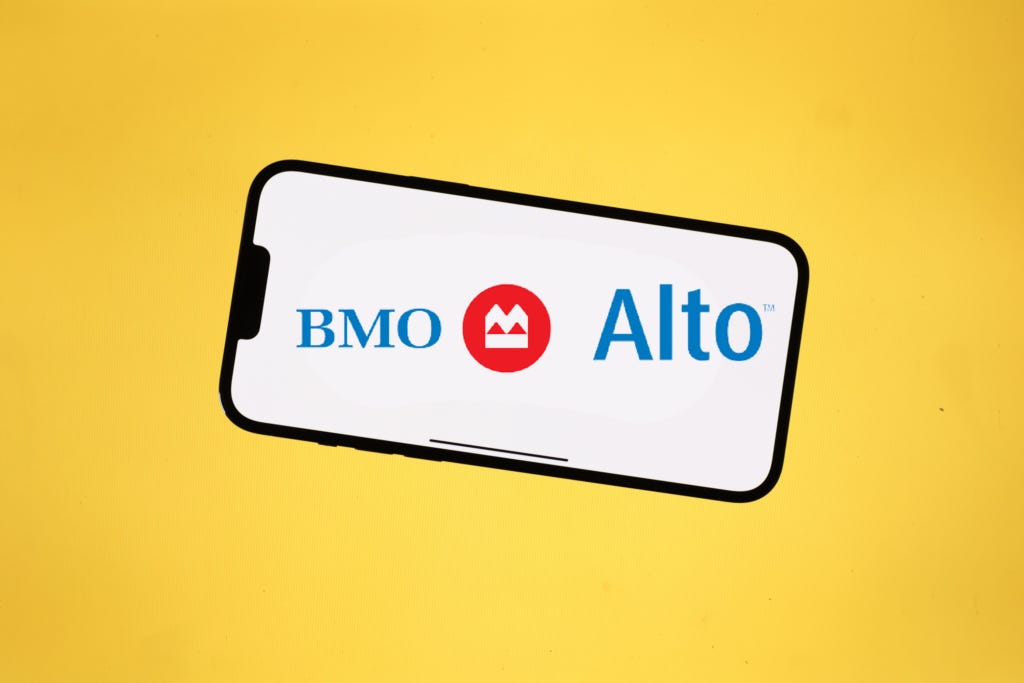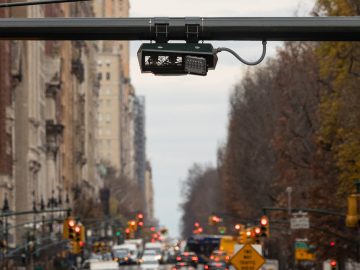More than half of all Americans say they wouldn’t be able to cover a $1,000 emergency expense from their savings, according to a Bankrate survey. The 52-week challenge is a savings plan that offers a way to flip that statistic on its head, one week at a time. By following this simple strategy to a tee, you could accumulate $1,378 in just one year — more than enough to cover a $1,000 emergency expense. But it’s really designed to build small amounts into strong savings habits, allowing for flexibility to change it up and save even more.
Intrigued? Let’s dive into how this straightforward method can help you build a robust savings habit — or set aside money for a short-term goal or holiday gifts — no matter your current financial situation.
How the 52-week money challenge works
The 52-week money challenge is a savings plan that gained popularity through social media around 2013. The concept is beautifully simple: You start by saving $1 in the first week, then increase your savings by $1 each subsequent week. By week 52, you put away $52, culminating in a total savings of $1,378 for the year.
Here’s a look at how your savings grows under the 52-week money challenge.
|
Amount you contribute |
Total saved |
Amount you contribute |
Total saved |
||
|
Week 1 |
$1 |
$1 |
Week 27 |
$27 |
$378 |
|
Week 2 |
$2 |
$3 |
Week 28 |
$28 |
$406 |
|
Week 3 |
$3 |
$6 |
Week 29 |
$29 |
$435 |
|
Week 4 |
$4 |
$10 |
Week 30 |
$30 |
$465 |
|
Week 5 |
$5 |
$15 |
Week 31 |
$31 |
$496 |
|
Week 6 |
$6 |
$21 |
Week 32 |
$32 |
$528 |
|
Week 7 |
$7 |
$28 |
Week 33 |
$33 |
$561 |
|
Week 8 |
$8 |
$36 |
Week 34 |
$34 |
$595 |
|
Week 9 |
$9 |
$45 |
Week 35 |
$35 |
$630 |
|
Week 10 |
$10 |
$55 |
Week 36 |
$36 |
$666 |
|
Week 11 |
$11 |
$66 |
Week 37 |
$37 |
$703 |
|
Week 12 |
$12 |
$78 |
Week 38 |
$38 |
$741 |
|
Week 13 |
$13 |
$91 |
Week 39 |
$39 |
$780 |
|
Week 14 |
$14 |
$105 |
Week 40 |
$40 |
$820 |
|
Week 15 |
$15 |
$120 |
Week 41 |
$41 |
$861 |
|
Week 16 |
$16 |
$136 |
Week 42 |
$42 |
$903 |
|
Week 17 |
$17 |
$153 |
Week 43 |
$43 |
$946 |
|
Week 18 |
$18 |
$171 |
Week 44 |
$44 |
$990 |
|
Week 19 |
$19 |
$190 |
Week 45 |
$45 |
$1,035 |
|
Week 20 |
$20 |
$210 |
Week 46 |
$46 |
$1,081 |
|
Week 21 |
$21 |
$231 |
Week 47 |
$47 |
$1,128 |
|
Week 22 |
$22 |
$253 |
Week 48 |
$48 |
$1,176 |
|
Week 23 |
$23 |
$276 |
Week 49 |
$49 |
$1,225 |
|
Week 24 |
$24 |
$300 |
Week 50 |
$50 |
$1,275 |
|
Week 25 |
$25 |
$325 |
Week 51 |
$51 |
$1,326 |
|
Week 26 |
$26 |
$351 |
Week 52 |
$52 |
$1,378 |
As you can see, the amount you’re saving each week increases gradually and never exceeds $52. These small increases make the challenge accessible, allowing you to ease into the habit of regular saving.
How to get started with the 52-week savings plan
You can embark on your 52-week savings journey in four steps:
-
Pick a good place for your savings. While a jar on your dresser might work, consider opening a high-yield savings account (HYSA) for your savings. These accounts offer higher interest rates than traditional savings accounts, helping your money grow at much higher rates than your traditional savings.
-
Set up automatic transfers. Many banks allow you to schedule weekly transfers between accounts automatically, such as from checking to a savings account. This automated “set it and forget it” approach will help you stick to the plan without having to remember to save each week.
-
Choose weekly amounts. Since the amount changes weekly, you’ll need to set up a schedule for each week. For example, save $1 in week 1, $2 in week 2 and so forth until you reach $52 in week 52. Some banking apps let you set recurring transfers with varying amounts, or set a reminder.
-
Consider using an app. Some financial apps are specifically built for the 52-week challenge, sending reminders and tracking your progress. Popular options include Astra and Qapital.
Dig deeper: Best budgeting apps to organize your finances the modern way
Why the 52-week challenge works
The 52-week money challenge has several benefits that make it an effective savings strategy.
Builds momentum
Starting small and gradually increasing your savings by just $1 a week can help even the most challenged savers build confidence and momentum. This incremental approach not only makes the task of saving feel manageable but also leverages the Zeigarnik Effect — a principle that refers to the tendency for people to finish uncompleted tasks versus ones they haven’t started at all.
Creates good money habits
Consistent weekly savings helps establish a long-term habit of putting money aside. Studies have shown that it takes an average of 66 days to establish a habit.
The reason is because repetitive actions create new neural pathways in our brains, essentially rewiring our thought patterns and behaviors. (Popular neuroscientist and author Joe Dispenza discusses this concept in a 2016 TED talk.) When we consistently perform an action like saving money each week, we strengthen these neural connections, making the behavior more automatic over time.
Provides a sense of achievement
As you set aside money each week, you get to see tangible progress of your efforts — which in turn reinforces positive financial habits. In this digital age, budgeting and saving apps can enhance this experience, providing an interesting, visual way to track your progress toward set financial goals.
It’s flexible
This simple approach makes for easy modifications that might better suit your financial situation, lifestyle and goals — and help you stick with the plan. These changes might make for a more manageable and successful plan for your specific needs.
How to personalize the 52-week challenge
You can easily personalize the 52-week savings challenge to fit your budget while still arriving at the same savings amount at the end of the year — or significantly more, if that’s your goal.
Popular options to consider include:
-
Modify your weekly savings. If saving $52 in a single week toward the end of the year sounds overwhelming, you might choose to save $26.50 each week throughout the entire year instead. This approach leads to the same total of $1,378 ($26.50 x 52) saved by the end of the challenge.
-
Reverse the challenge. Not sure that a year from now is the best time to be making your largest weekly payment? With this variation, you start by saving $52 in your first week and then decrease the amount by $1 each subsequent week. This approach also can be helpful if you’re starting the challenge at a time when you’re more flush with disposable income.
-
Vary your weekly increments. Instead of saving just $1 more each week of the challenge, you can select a different increment, such as saving an additional $2, $5 or even $10 per week. For example, if start with $2 and then increase the amount by $2 each week, you’ll have $2,756 at the end of the year.
Ultimately, how you approach the challenge is up to you. If the 52-week money challenge doesn’t resonate with you — that’s perfectly fine. You can explore these 5 popular budgeting strategies instead to discover the best fit for your financial personality.
Dive deeper: The 50/30/20 rule: A simple, effective budgeting strategy
Popular savings goals for the 52-week challenge
Saving without a goal is like making a peanut butter sandwich without jelly. Here are some exciting goals to strive for as you progress through the 52-week money challenge:
-
Build an emergency fund. If you don’t already have one, the 52-week challenge is a great way to jump-start your emergency fund.
-
Invest for the future. Consider opening or contributing to an existing retirement account like an IRA or 401(k) with your 52-week challenge funds.
-
Upgrade your home. Use the funds to make repairs or value-adding improvements to your home. Here are the top 7 home renovations that can increase your property’s value and quality of life as you age.
-
Start a side hustle. Use the funds as seed money for a small business or side gig. Read about the best jobs for seniors, retirees and mature workers for inspiration.
-
Reinvest in the challenge. Start the challenge again, perhaps with higher amounts, to build on your success.
Tips for staying on track
Even with the best intentions, staying committed to a yearlong challenge can be difficult. Pick and choose from our tips to stay motivated and crush your savings goals.
-
Set weekly reminders. Use your phone or calendar app to prompt you when it’s time to save.
-
Automate your savings. Even better, set up automatic transfers to your savings account each week to remove the temptation to skip a week.
-
Align with your income. If you’re paid biweekly or monthly, consider adapting the challenge to match your pay schedule.
-
Track your progress visually. Use a chart or graph to see your growth at a glance. Many of today’s best budgeting apps offer a range of visual features to track your progress at a glance.
-
Celebrate financial milestones. Treat yourself with a small award when you hit key savings targets of $500 or $1,000.
-
Find an accountability partner. Share your challenge with a friend or family member who can encourage you along the way.
-
Be kind to yourself. If you miss a week, don’t give up — just pick up where you left off or make it up when you can.
Remember, it’s never too late to begin your savings journey, and every dollar makes a difference. By starting small and staying consistent and flexible, you can successfully tackle the 52-week challenge.
Sources
About the writer
Kat Aoki is a seasoned finance writer who’s written thousands of articles to help people better understand technology, fintech, banking, lending and investments. Her expertise has been featured on sites like Forbes Advisor, Lifewire and Finder, with bylines at top technology brands in the U.S. and Australia. Kat strives to empower consumers and business owners to make informed decisions and choose the right financial products for their needs.
Article edited by Kelly Suzan Waggoner



